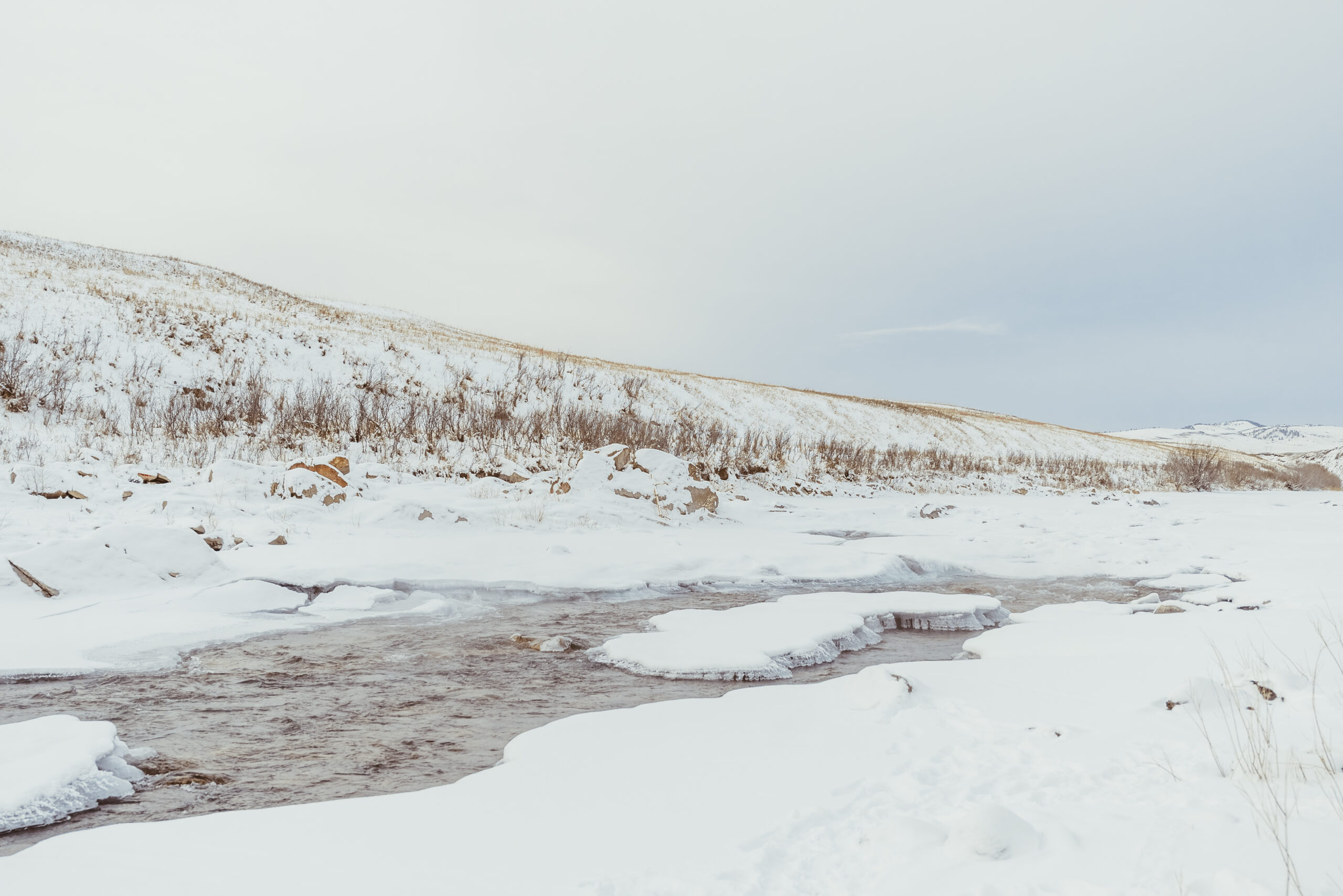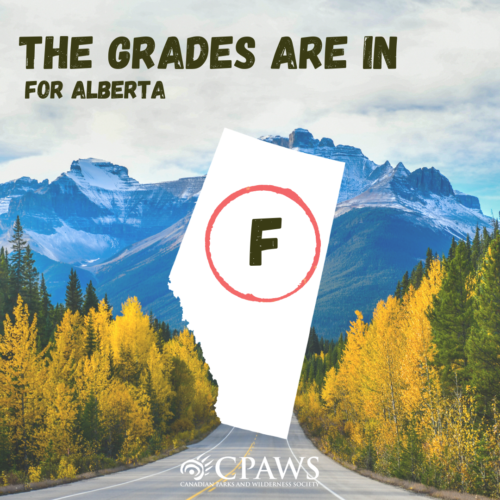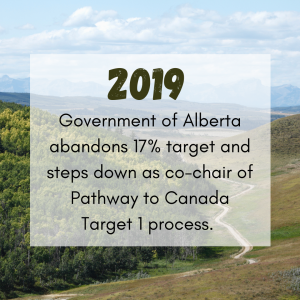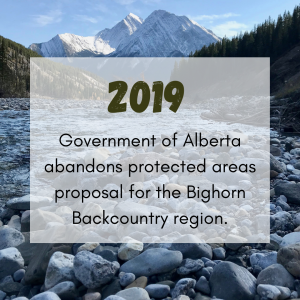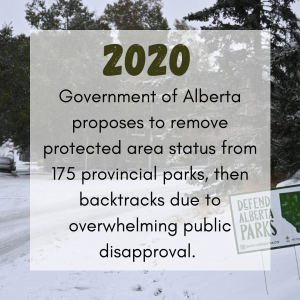June 22, 2021
CALGARY/TERRITORIES OF THE BLACKFOOT AND PEOPLES OF TREATIES 6 AND 7, HOME TO MÉTIS NATION OF ALBERTA, REGION III
Conservation foot-dragging by provinces and territories was the main reason behind Canada’s failure to meet its international promise to protect at least 17% of its land by 2020. According to a new Report Card by the Canadian Parks and Wilderness Society (CPAWS), Alberta ranked at the bottom of the list nationally, with an F, while the federal government, Quebec and Northwest Territories earned the highest grades for their efforts to meet the target (A- to B+).
The first of its kind, The Grades Are In: A Report Card On Canada’s Progress in Protecting its Land and Ocean is intended as a baseline against which to track Canada’s annual progress toward reaching its 30X30 (30% by 2030) protection goal. This assessment shows that a lack of commitment and ambition across much of the country stymied efforts to protect at least 17% of Canadian land and inland waters by last year’s 2020 deadline. Currently, only 13.1% of the country’s land is protected. Canada met its 10% ocean protection target by 2020 with 13.8% protected, albeit with concerns about the quality of conservation measures in some areas.
While previous Alberta governments created new protected areas, committed to protecting 17% of the province’s land and freshwater by 2020, and co-chaired the nationwide Pathway to Canada Target 1 process, the current provincial government has completely reversed progress by abandoning the 2020 target, undermining Alberta’s existing provincial parks system, and opening the Rocky Mountain foothills to coal development. Becky Best-Bertwistle with CPAWS Southern Alberta states, “Alberta is in urgent need of a course correction when it comes to parks and public lands. This should include halting efforts to undermine and privatize our parks system and committing to evidence-based conservation targets and higher standards for protected areas, creating stronger protection for the Eastern Slopes.”
In 2020, the provincial government announced it was planning to remove the protected area status from 175 provincial parks through the “Optimizing Alberta Parks” process. While massive public outcry caused the government to backtrack on this process, the future of these sites remains uncertain.
In February 2021, in response to sustained pressure from the Mikisew Cree First Nation and conversations with industry, the Alberta government announced a plan to almost double the area of Kitaskino Nuwenëné Wildland Provincial Park from 1,618 km2 to more than 3,000 km2. If approved, hopefully in the fall, the expanded park would be an Indigenous-led conservation initiative, cooperatively managed by provincial and Indigenous authorities. The park will also support other Indigenous-led conservation initiatives, including a Guardians program. Kecia Kerr, Executive Director at CPAWS Northern Alberta commented, “We hope that with completion of this park Alberta can earn a better grade next year. Indigenous-led proposals for new protected areas and Indigenous Protected and Conserved Areas (IPCAs) should be seriously considered by the provincial government and incorporated in the regional and sub-regional planning processes.”
To learn more read through the Report Card here.
More News


New Report Demonstrates High Risk to Upper Highwood Watersheds Should Logging Go Ahead


Banff Railway Lands Area Redevelopment Plan Goes to Public Hearing
